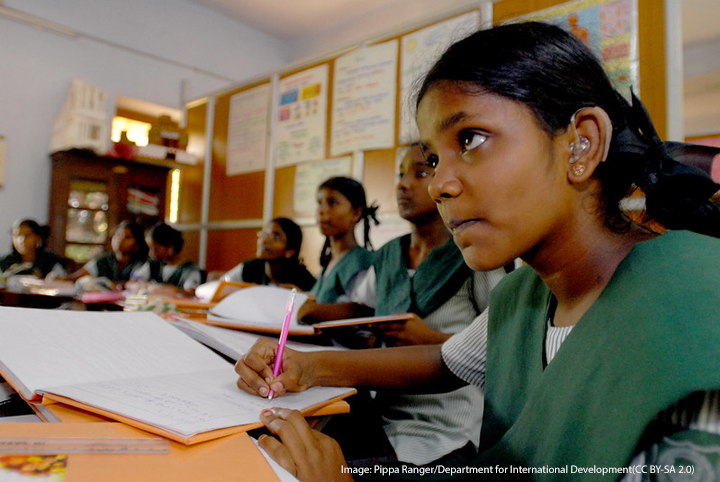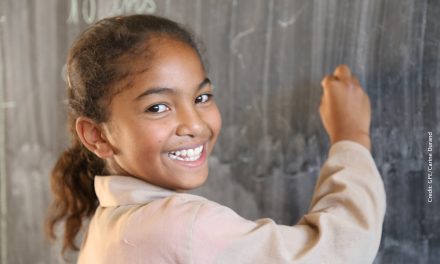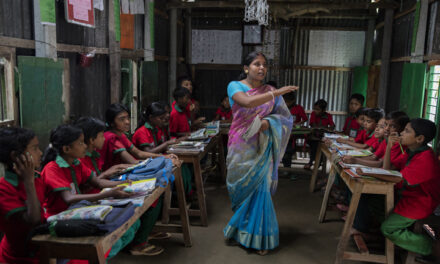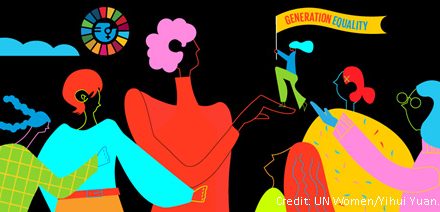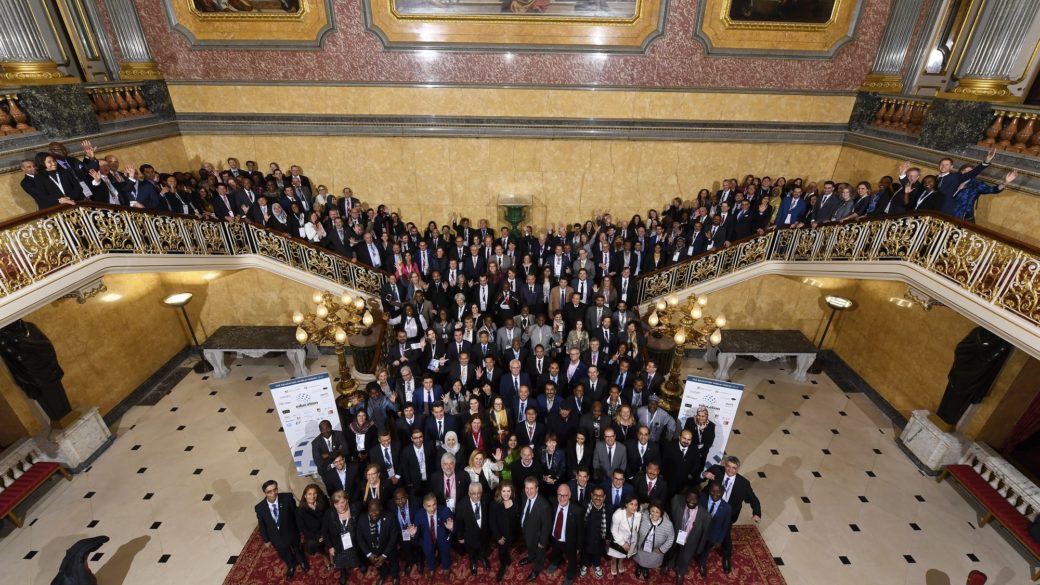This blog was written by Safeena Husain, Founder & President, Educate Girls. This blog was originally published on the Educate Girls website on 18 May 2022.
As parts of India are gripped in an extreme heatwave, I am reminded of the alarming statistic by Care International: ‘Women are 14 times more likely to die in climate related disasters than men[1]’ – a staggering fact that illustrates how the poorest women and girls, who contribute the least to the climate crisis, bear the highest burden. When drought hits a remote village in India, it is women and girls who have to walk the extra miles in the scorching heat to fetch water. The responsibility of bringing firewood for cooking also falls on the woman of the household, a resource that is becoming ever more scarce. 80% of agricultural work in India is undertaken by women[2] who are forced to make daily decisions about how to remain productive when climate change is affecting crop yields.
Alternatively, Did you know that girls’ education can help combat the climate crisis? Surprising, right? Back in 2019 I spoke on the TED stage about this incredible fact that out of a list of 80 strategies to combat the climate crisis, scientists ranked girls’ education at number 6 – higher than solar panels and electric cars.[3]
Since then we have all learnt a lot more about the urgency of the climate crisis and the critical contribution that women and girls make to reduce carbon emissions, survive the inevitable weather disasters, and prepare for life in a climate adjusted world. We have lived through a global pandemic and seen how women and girls bore the brunt of the lockdown’s impact and also learnt the importance of education as a critical lever for change as humanity tackles these crises and ensures a just transition to a more resilient world.
However, we know that if you educate these girls, they are more likely to survive and become more climate resilient. And, not only that, but they will also educate the next generation thereby breaking the cycle of poverty and illiteracy and underpinning all our mitigation and adaptation strategies.
The future of the planet lies in the hands of the next generation – and that generation has to be given access to the quality education if we are to not only survive but thrive.
For the last few months I been working closely with inspirational education leaders Liesbet Steer at the Education Commission, Amel Karboul of the Education Outcomes Fund, and Suzanne Ehlers from Malala Fund to author a paper that explains why, as a donor and practitioner community, we have to make a strong case to the rest of the world that we cannot fund and implement education and climate programmes in silos. Our report argues that we have to recognize as a solution, fund and promote ‘education for climate action’.
The report concludes that there are three critical areas of focus 1) Teaching climate literacy for behavior change and collective action, 2) Cultivating skills for a “just transition” to a green economy, and 3) Building the capacity to adapt. Across these areas of mitigation, adaptation and resilience building, it is critical that education empowers local communities to define and execute their own climate agendas. This is a core tenet of climate justice.
And this is where girls’ education and its multiplier effect comes in. For the 259 million children globally, who are still denied an education[4], climate curricula and the teaching of green skills will have little impact if all children are not able to access basic quality education. We need all children to be educated and cannot deny 12% of the world’s children their right to go to school, particularly the most vulnerable out-of-school girls.
Improvements in adaptation are possible even if the education does not explicitly address climate topics. By generally increasing literacy and economic opportunity, vulnerable populations are better equipped to respond to climate related challenges, such as floods that might force them to move or poor harvests that might force them to find other work.
We urge you to read our report and take note of our calls to action for governments, donors and practitioners; from including climate/education commitments in NDCs, to incorporating action-oriented climate education into the classroom at all levels. We call on donors to provide long term, flexible capital at the intersection of climate and education and to fund building the evidence base for what works, particularly over longer time horizons and scale proof points to give to governments the confidence to act.
Education does more than respond to challenges in a changing world – education has the power to save the planet.
Please click here to read the full report.
1 CARE, 2021
2 Oxfam, 2013
3 Project Drawdown, 2018
4 UNESCO, GEM Report, 2022

